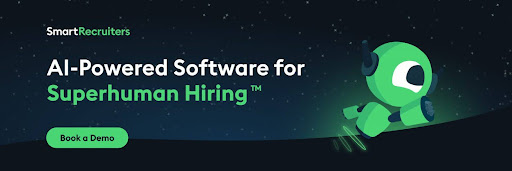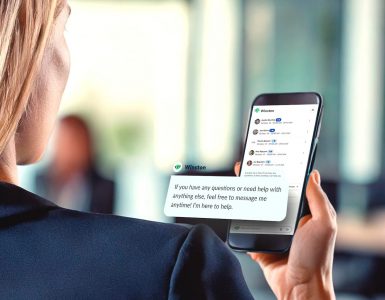At many organizations, talent acquisition has finally reached its potential as a strategic function. At the beginning of 2023, 70% of global talent acquisition (TA) professionals told LinkedIn their teams could claim a seat at the proverbial table.
“TA is more of a strategic enabler now than it ever has been,” said Ben Handyside, Director of Talent Acquisition, EMEA, at Colliers, “I think it should be at the table, in boardrooms, and with senior leaders. It is a mechanism to unlock the potential of an organization.”
As any talent leader knows, unlocking the potential of an organization is an ongoing, iterative process. This year, several SmartRecruiters customers appeared in exclusive interviews with Matt Alder on these three episodes of the Recruiting Future podcast:
- Episode 543: Hiring At Speed And Scale – Adam Reynolds, Head of Talent, Frasers Group
- Episode 544: Transforming TA Teams – Eric Houwen, Head of Talent Acquisition & Employer Branding, Deloitte Netherlands, and Lindsey Stone, Group Head of Talent Attraction & Resourcing, Greene King
- Episode 545: Using AI Strategically – Ben Handyside, Director of Talent Acquisition, EMEA, at Colliers
While there’s no substitute for listening to the entire conversations, we distilled four lessons below. As Matt Alder says, “With the pace of change continuing to increase, the most successful TA functions will be the ones that adapt the quickest.” We hope these tips will help you do just that.
1. Pay attention to the forces driving change
“The business is driving change on the one hand, and the limitations of the labor market are driving it on the other,” said Eric Houwen. Deloitte Netherlands has a high demand for specialty technology skills and capabilities, while the workforce is looking for less traditional work agreements, which has led to an increase in contingent hiring.
Companies in the retail and hospitality industries face different business and labor market challenges. Both Frasers Group and Greene King are strong value-led organizations that aim to bring the right people on board to represent their portfolio of brands. But the labor market’s interest in retail and hospitality changed. “After the COVID furloughs, many individuals made different career decisions,” said Lindsey Stone. “There were candidate lifestyle behavior changes we didn’t expect.”
“There are a lot of options [for candidates] out there at the moment,” Adam Reynolds said about Frasers’ hiring challenges. “I don’t think it would be unfair to say that retail maybe isn’t everyone’s first choice right now.”
With such pervasive changes affecting the candidate pipeline, all three companies have adjusted how they approach talent attraction.
2. Take your people with you
Any leader is only as effective as the people on their teams. Deloitte NL has begun upskilling and enabling the TA team to be more conversant in the strategic language of the business. “We’re asking different things of the team than we did before in order also to trigger new thinking, new behavior,” said Eric Houwen. “We call it the trusted advisor journey.”
Metrics enable a stronger business partnership. “We give our teams tools to understand what higher value work looks like,” Lindsey Stone said. “Traditional metrics are hard to put in place because if you base it on time-to-fill or cost-per-hire, you get drawn into the old ways of working.”
Early on, Frasers saw the importance of getting hiring teams on board with new processes that streamline hiring. When rolling out SmartRecruiters to store managers, Adam Reynolds built “drumbeat communications” with a multimedia approach. He knew things were working when they reached “almost a herd mentality of when a group of people starts to pull in the same direction.” Read more about the Frasers story here.
3. Apply technology strategically
“Technology enables everything we do,” said Lindsey Stone. Greene King built a new careers website with SmartRecruiters Attrax. “It’s the touch point to conversations for candidates, regardless of whether they’re applying or just trying to learn a bit more about the organization.” The Greene King career site offers candidates information on different career paths and diversity initiatives. It also offers job alerts and delivers personalized results to returning candidates.
At Deloitte NL, the first step to becoming more strategic was to give time back to recruiters. Before SmartRecruiters, recruiters encountered over 250 manual data entry points in a typical candidate journey across six non-integrated applications. “If administration is up to 50% of your time as a recruiter, what value are you going to bring?” asked Eric Houwen. Read more about Deloitte’s story here.
In the high-volume, seasonally driven world of retail at Frasers Group, automation was the key to unlocking success. The team built automated workflows in SmartRecruiters customized for each brand and role. “The system does an amazing job of creating very elegant and attractive communication flows,” Adam Reynolds said. With the workflows in place, the team could set SLAs to move candidates through the hiring funnel at the pace required by the business. Reviewing the data regularly keeps the team on track. “Knowledge is power,” Adam said.
4. Take a human approach to AI
In “Using AI Strategically,” Ben Handyside shared the journey of using ChatGPT at Colliers EMEA. The first step was to acknowledge its use. “There was this unsaid utilization of ChatGPT,” Ben said. “Suddenly, people started producing high-quality work in quick turnaround times and didn’t want to tell their managers.” By bringing ChatGPT to everyone’s attention, TA team members could discover how their colleagues were using it and forge a path forward. “It removed some of the fear,” he said.
The next steps were to acknowledge the risks and create guardrails for its use. “You have to be targeted about where you use it within the TA function,” Ben said. “It comes down to the challenges organizationally that TA is being asked to find the solutions to.” Ben’s team published and socialized an operational framework for using ChatGPT in the TA function, which includes defining job specs and drafting communications.
“You can never get away from the need for human interaction,” Ben said. “AI should be embraced to remove the burden of admin, or the burden of not being able to get to the true, proper, valuable stuff. The data suggests that we have to be super intentional about creating connectivity and that connectivity comes through being human.”
Frasers Group takes a similar approach of focusing on candidates’ humanity. Adam Reynolds’ team uses the AI matching tool SmartAssistant to match candidates to jobs. With 1.3 million applications last year for 30,000 hires, it’s essential that they have an accurate way to filter candidates. “There is a sweet spot that you’ve got to find between automation of communication and being systematic and robotic,” Adam said. “People want to feel like they’ve been spoken to by a human and taken into consideration.”
Forging a path forward
Each of these talent leaders takes an active approach to making changes in their organization and using technology to help them get there. When asked what advice he would give to other TA leaders, Ben said, “Be brave and bold and have confidence in what you’re doing. You’re there because you know your organization, you’re trusted and valued as a leader. There are more opportunities coming by embracing and enhancing rather than fearing change.”
Being a trusted partner–and having trusted technology partners–will help you create the future one day at a time. To get started on your journey, get in touch with us for a demo today.






